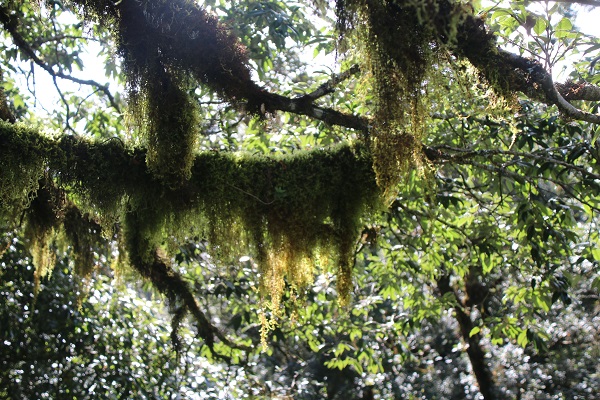Previous studies have shown that epiphytes exhibited high interspecific variability in leaf stoichiometry (i.e. the study of multi-element balances in ecological interactions and processes). However, it remains unclear whether leaf stoichiometry can help explain and predict the dynamics of vascular epiphyte populations under climate change.
In a study published in Plant Biology, researchers from Xishuangbanna Tropical Botanical Garden (XTBG) attempted to link ecological stoichiometry to epiphyte population dynamics, by using four consecutive epiphyte censuses performed in 2005, 2010, 2015, and 2020 in a subtropical montane cloud forest in the Ailao Mountains in SW Yunnan.
The researchers analyzed the long-term dynamics of epiphyte populations and explored the relationships between population dynamics of epiphyte and leaf stoichiometric traits on the census of 19 epiphyte species over 15 years.
From the end of 2009 to early 2010, Ailao Mountains experienced an extreme drought event. Most of the 19 epiphyte species showed an obvious decrease in the number of individuals, and all species showed negative growth in the number of populations. However, the total number of individuals gradually recovered subsequently.
They found that the increase in the number of vascular epiphyte individuals from 2010 to 2015 was significantly negatively correlated with leaf nitrogen and phosphorus concentration, and was significantly positively correlated with the ration of leaf carbon and nitrogen.
The researchers thus considered that a high resource use efficiency and/or colonizing ability may explain the rapid recovery of vascular epiphyte populations following an extreme drought.
“Our findings highlight the utility of ecological stoichiometry for studying the responses of epiphytes to projected changes in the climate,” said LIU Wenyao of XTBG.
Contact
LIU Wenyao Ph.D
Key Laboratory of Tropical Forest Ecology, Xishuangbanna Tropical Botanical Garden, Chinese Academy of Sciences, Mengla, Yunnan 666303, China
E-mail: liuwy@xtbg.ac.cn

Vascular epipytes in Ailao Mountains subtropical forest. (Image by FAN Xiaoyang)

